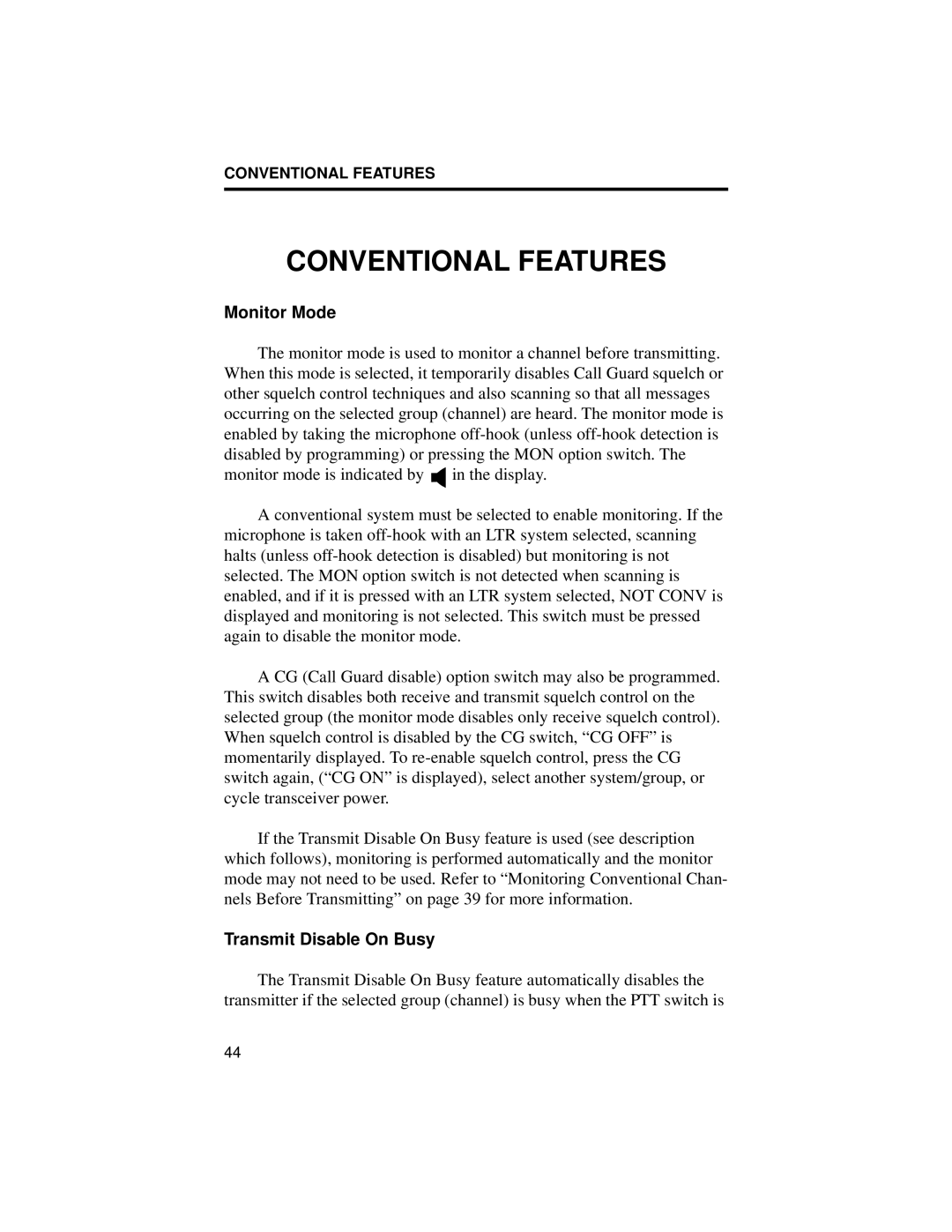
CONVENTIONAL FEATURES
CONVENTIONAL FEATURES
Monitor Mode
The monitor mode is used to monitor a channel before transmitting. When this mode is selected, it temporarily disables Call Guard squelch or other squelch control techniques and also scanning so that all messages occurring on the selected group (channel) are heard. The monitor mode is enabled by taking the microphone
monitor mode is indicated by ![]() in the display.
in the display.
A conventional system must be selected to enable monitoring. If the microphone is taken
A CG (Call Guard disable) option switch may also be programmed. This switch disables both receive and transmit squelch control on the selected group (the monitor mode disables only receive squelch control). When squelch control is disabled by the CG switch, “CG OFF” is momentarily displayed. To
If the Transmit Disable On Busy feature is used (see description which follows), monitoring is performed automatically and the monitor mode may not need to be used. Refer to “Monitoring Conventional Chan- nels Before Transmitting” on page 39 for more information.
Transmit Disable On Busy
The Transmit Disable On Busy feature automatically disables the transmitter if the selected group (channel) is busy when the PTT switch is
44
